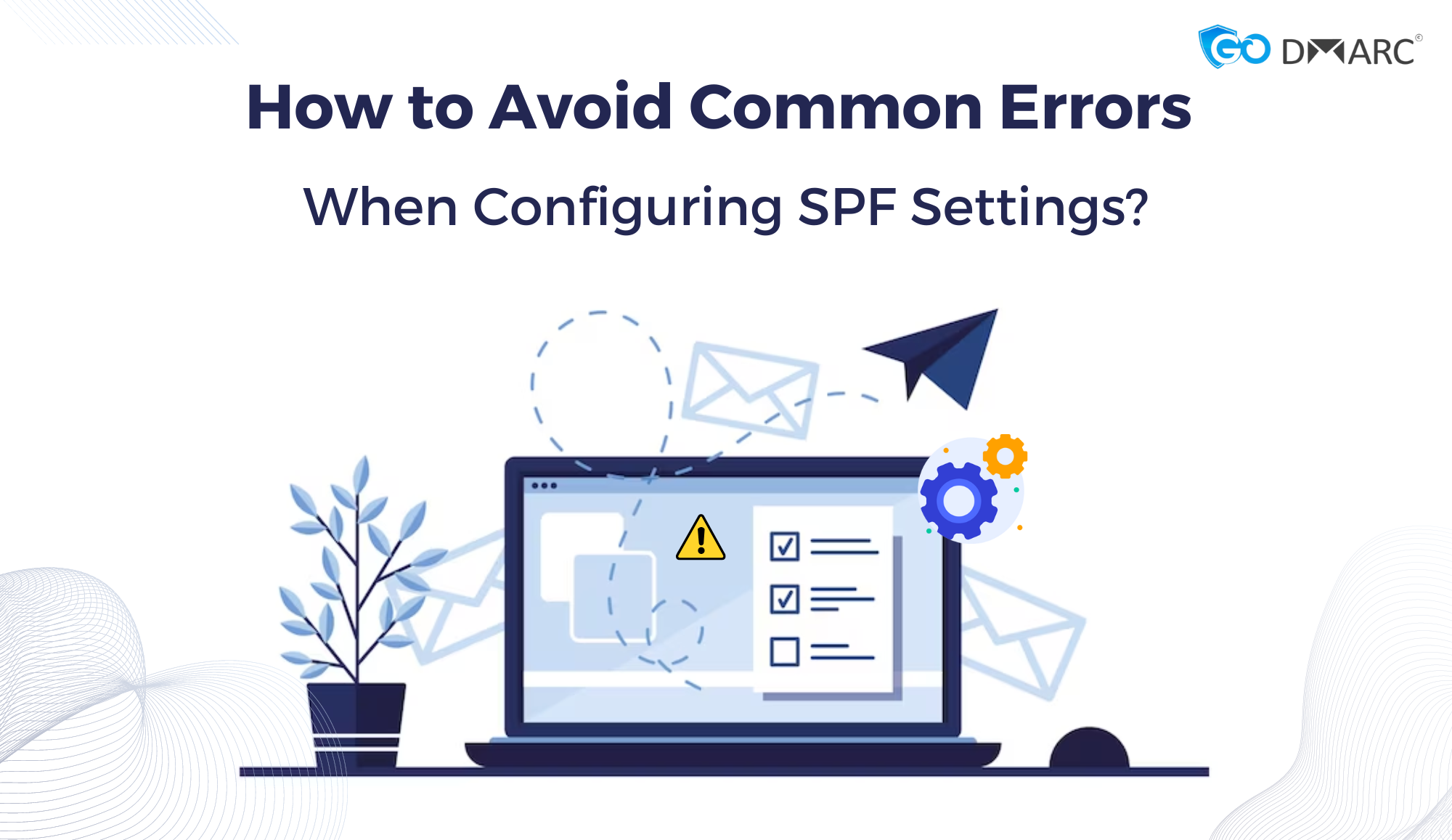Enhancing SPF validation is crucial to achieving a higher email deliverability rate and safeguarding your domain against phishing and spam attacks. However, configuring SPF settings can be complex, and making mistakes is possible. To prevent false positives and ensure proper DMARC compliance for your email-sending domain, it is essential to address and avoid common errors.
In order to protect your domain from scammers, get a free DMARC trial for 10 days.
TABLE OF CONTENTS
Typical Errors To Avoid When Configuring SPF Settings
Properly configuring SPF settings is crucial for email deliverability and protection against phishing and spam attacks. However, certain DNS mechanisms can lead to errors if not used correctly. These errors include exceeding the SPF record size, exceeding the limit of 10 DNS lookups, and having more than 2 unresolved DNS lookups. To help you avoid these errors, we have compiled a list of common SPF mistakes to watch out for when configuring your SPF settings.
Mistake 1: Multiple SPF Records
One common mistake to avoid when configuring SPF settings is having multiple SPF records for a single domain. When there are multiple SPF entries, receiving servers may reject both records, leading to SPF failures. To address this issue, it is important to remove any obsolete SPF entries or services that are no longer in use.
To rectify this mistake, you can merge multiple SPF records into a single record. For example, suppose a user domain has an existing SPF record and includes an Elastic Email SPF entry. However, the verification checks do not pass. One possible reason for this failure could be the presence of two SPF records on the domain. By consolidating these records into a single SPF entry, you can improve the accuracy and effectiveness of your SPF configuration.
Mistake 2: Exceeding the Limit of DNS Lookups
Another typical error to avoid when configuring SPF settings is exceeding the limit of DNS lookups. SPF has a maximum limit of 10 “include” lookups, which means you cannot have more than 10 references to other domains within your SPF record. Each occurrence of parameters such as “include,” “a,” “mx,” “ptr,” “exists,” and “redirect” generates a lookup. It’s important to note that if a domain referred to in an “include” contains additional parameters, those will also be counted towards the 10-lookup limit. Therefore, surpassing the lookup limit is a common mistake that can occur during SPF configuration.
To resolve this issue, it is necessary to remove excessive “includes” and references to inactive domains from your SPF record. By eliminating unnecessary lookups and ensuring that your SPF record is within the specified limit, you can avoid SPF failures and maintain proper email authentication and deliverability.
Mistake 3: Improper Placement of the ‘all’ Mechanism
When configuring SPF settings, it is important to consider the placement of the ‘all’ mechanism within your SPF record. The ‘all’ mechanism acts as a fallback option that matches all senders who didn’t match any of the preceding tools in the record. To ensure proper SPF functionality, it is recommended to position the ‘all’ mechanism at the end of your SPF record and use it with the appropriate prefix.
Mistake 4: Reliance on the ‘ptr’ Mechanism
One mistake to be cautious of when configuring SPF settings is relying heavily on the ‘ptr’ mechanism. The ‘ptr’ mechanism is used for performing reverse DNS lookups, where the hostname is retrieved based on an IP address. While this mechanism can be helpful, especially for B2B brands, it is important to be aware of its limitations and potential drawbacks.
The ‘ptr’ mechanism has reliability issues and can place a burden on reverse DNS servers and the associated email systems. Reverse DNS lookups involve querying the DNS server to obtain the hostname corresponding to an IP address, which can introduce delays and impact email delivery time.
Mistake 5: Misuse of the ‘mx’ Mechanism
One mistake to avoid when configuring SPF settings is the improper use of the ‘mx’ mechanism. The ‘mx’ mechanism is designed to validate against domain names associated with mail servers, rather than specific mail server names. It is important to understand the correct usage of this mechanism to ensure accurate SPF configuration.
Using ‘mx:mailserver.sample.com’ is considered incorrect unless you specifically require SPF validation to check all hosts that accept mail for the ‘mailserver.sample.com’ domain. In most cases, such hosts do not exist, as ‘mailserver.sample.com’ itself is a host and not a domain.
Wanna know more about SPF? Checkout info on SPF hard fail and SPF soft fail
Conclusion
Avoiding common errors when configuring SPF settings is essential for maintaining a high email deliverability rate and protecting your domain from phishing and spam attacks. By publishing a valid SPF record, ensuring correct syntax and format, managing the size of the record, and including only authorized sources, you can enhance email authentication and domain security, ultimately improving the success of your email communications.
FAQs
Q) Can I use multiple SPF records for my domain?
A) No, it is not recommended to use multiple SPF records for a single domain. Having multiple SPF records can cause conflicts and may lead to SPF failures. Instead, you should consolidate all the necessary information into a single SPF record.
Q) How long does it take for changes in SPF records to take effect?
A) After making changes to your SPF record, it can take up to 48 hours for the changes to propagate across DNS servers. During this time, some email receivers may still validate against the old SPF record. It is important to consider this delay when making SPF configuration updates.
Q) Should I monitor my SPF configuration regularly?
A) Yes, it is recommended to periodically review and monitor your SPF configuration. Changes in your email infrastructure or the addition of new services may require updates to your SPF record. Regular monitoring ensures that your SPF settings remain up to date, reducing the risk of email deliverability problems.




